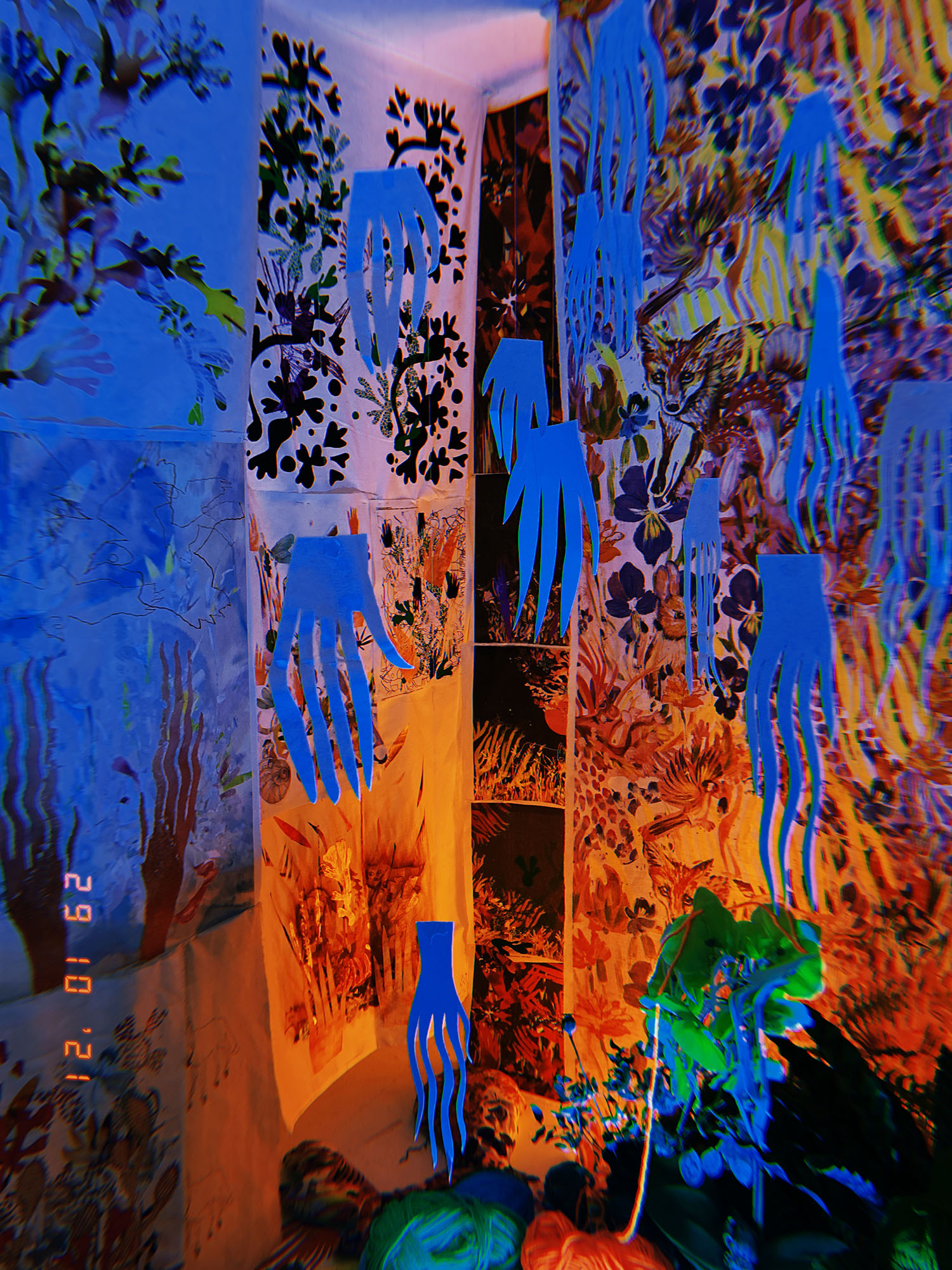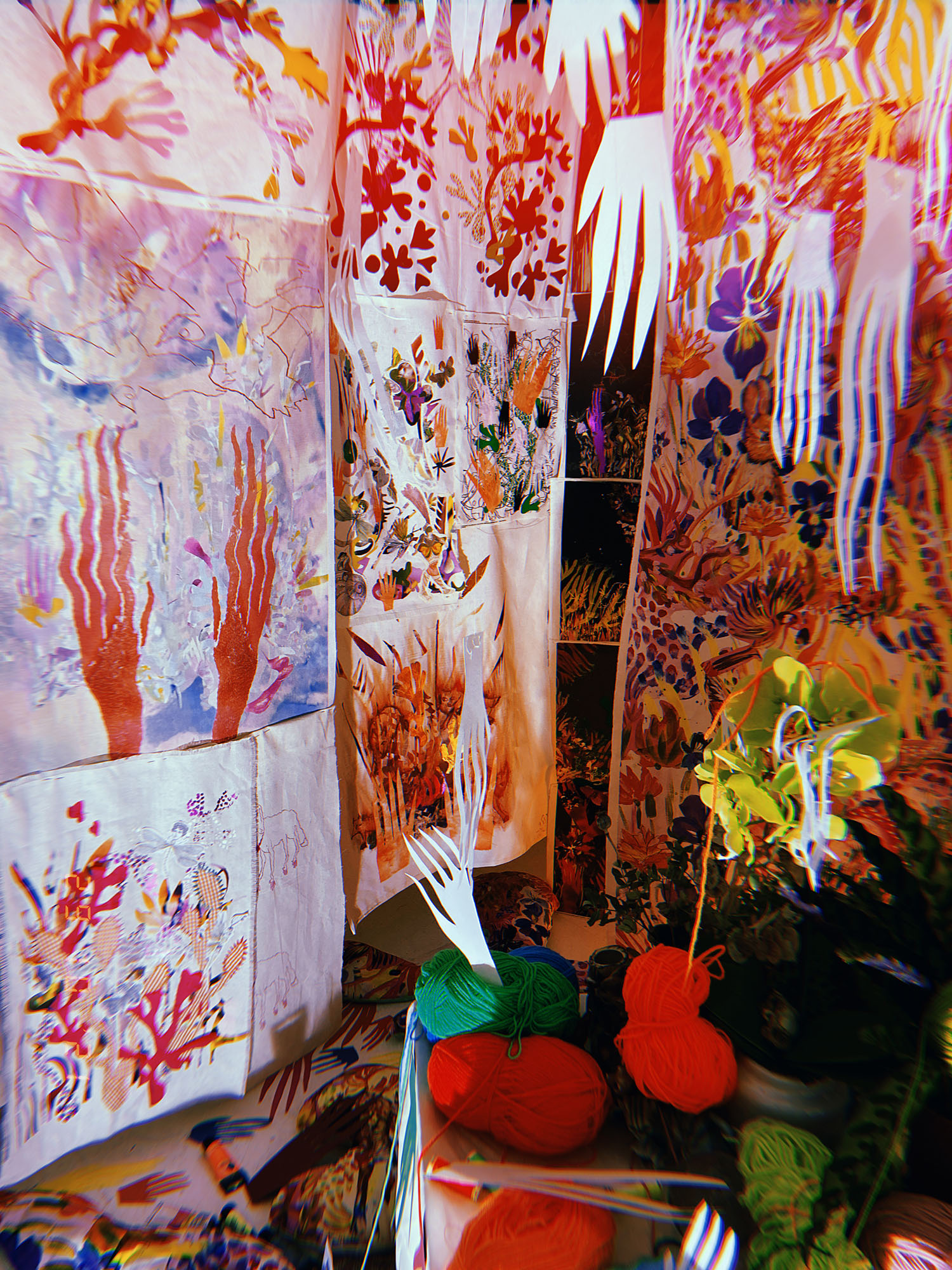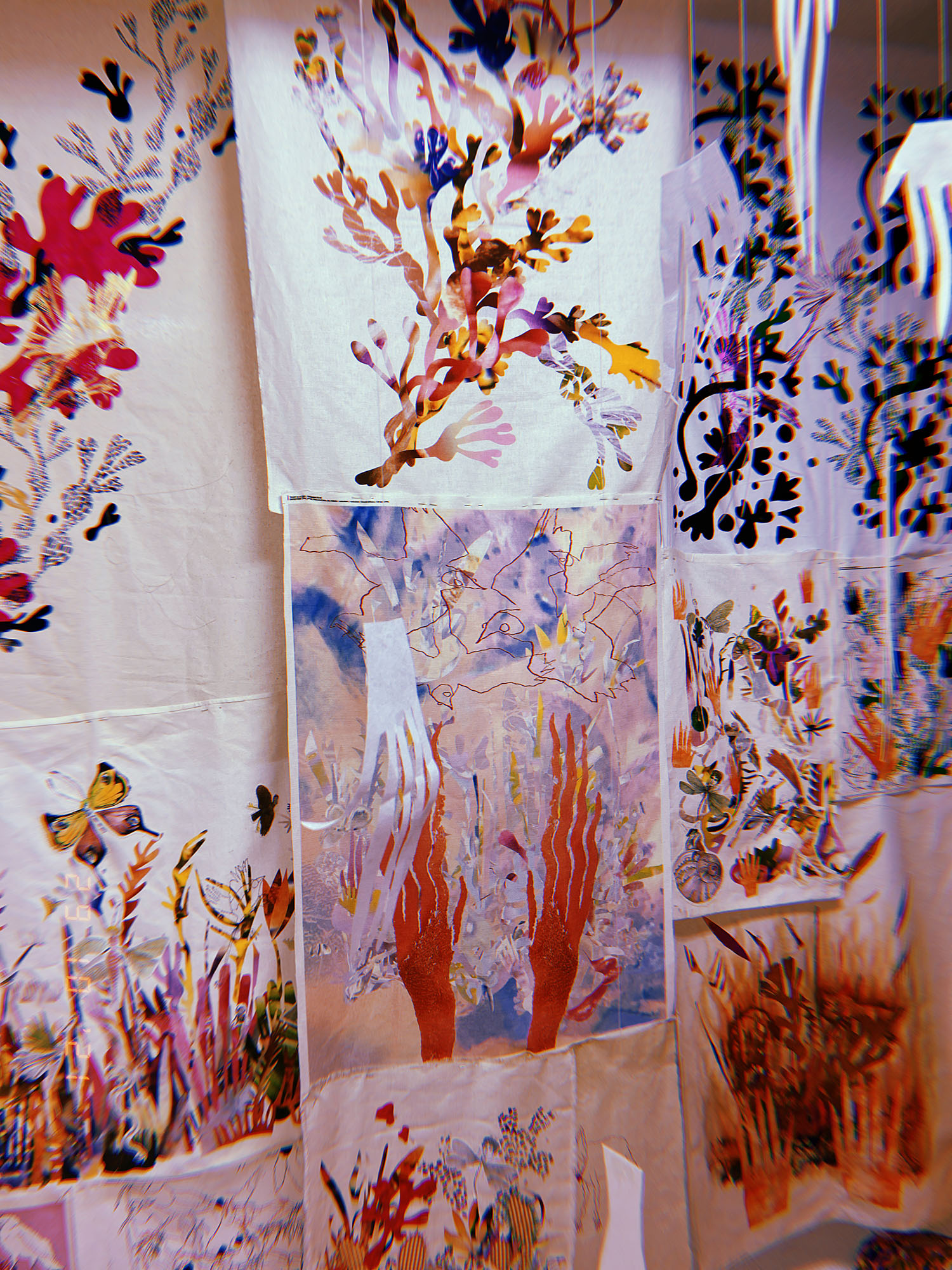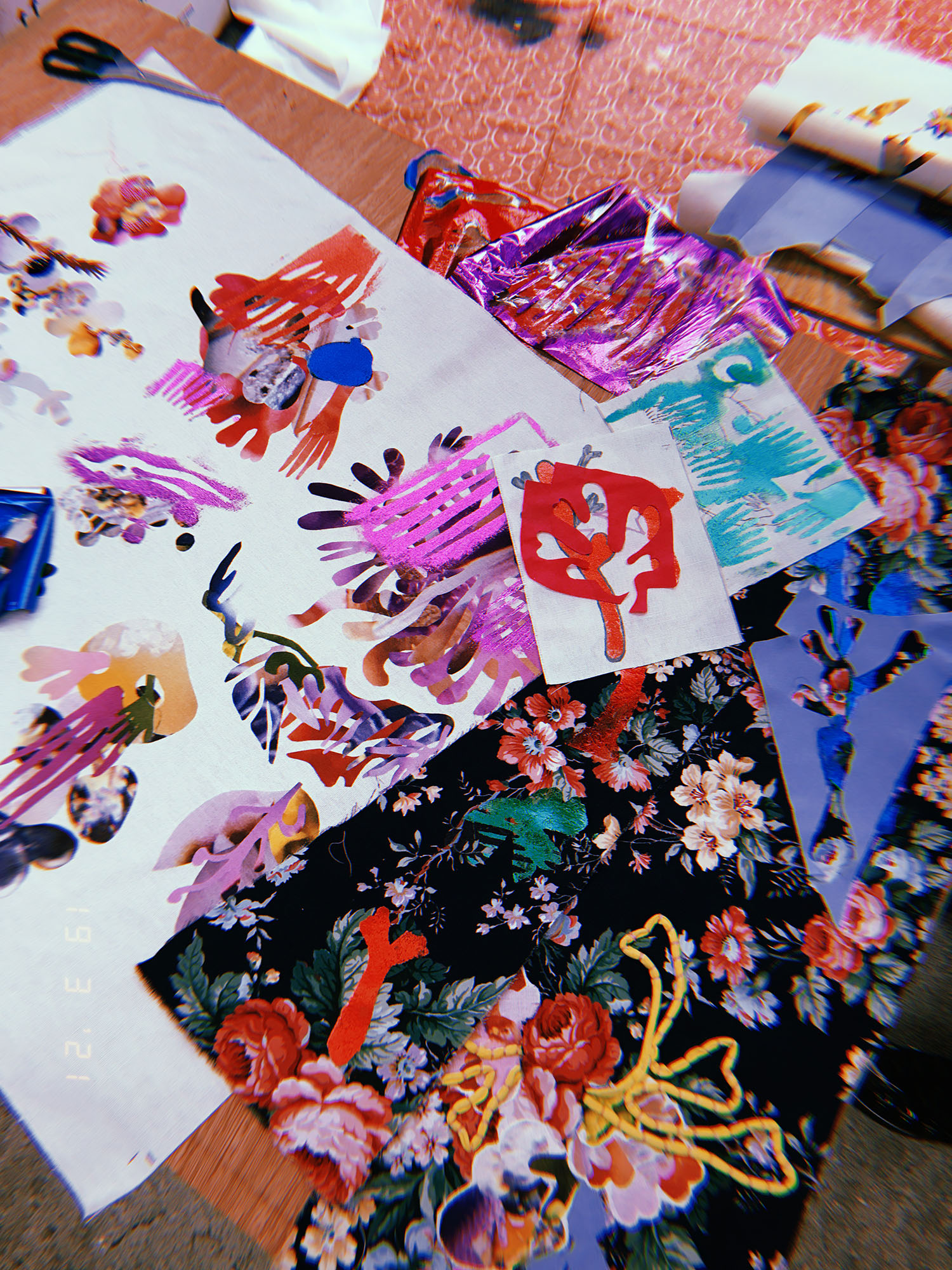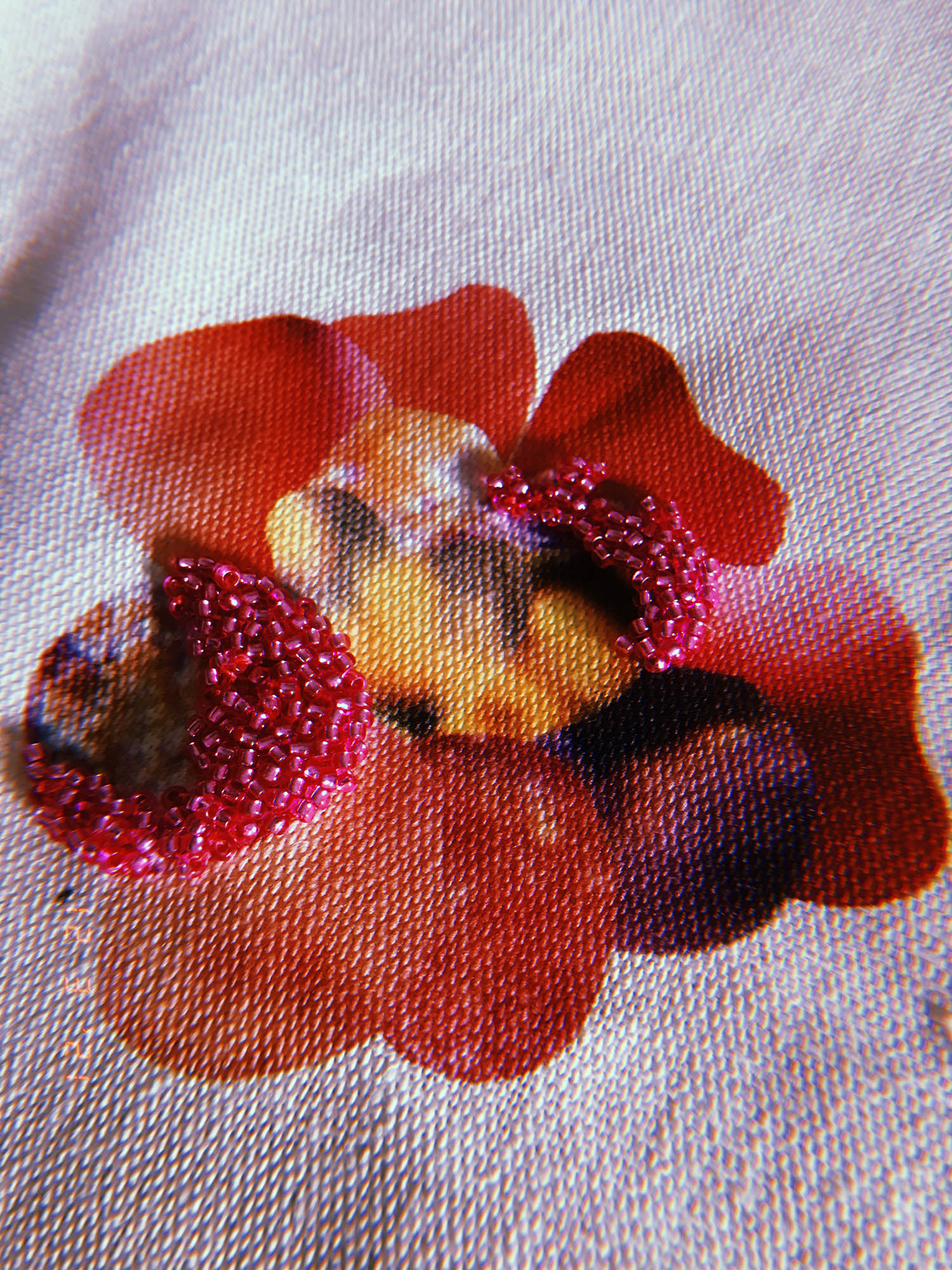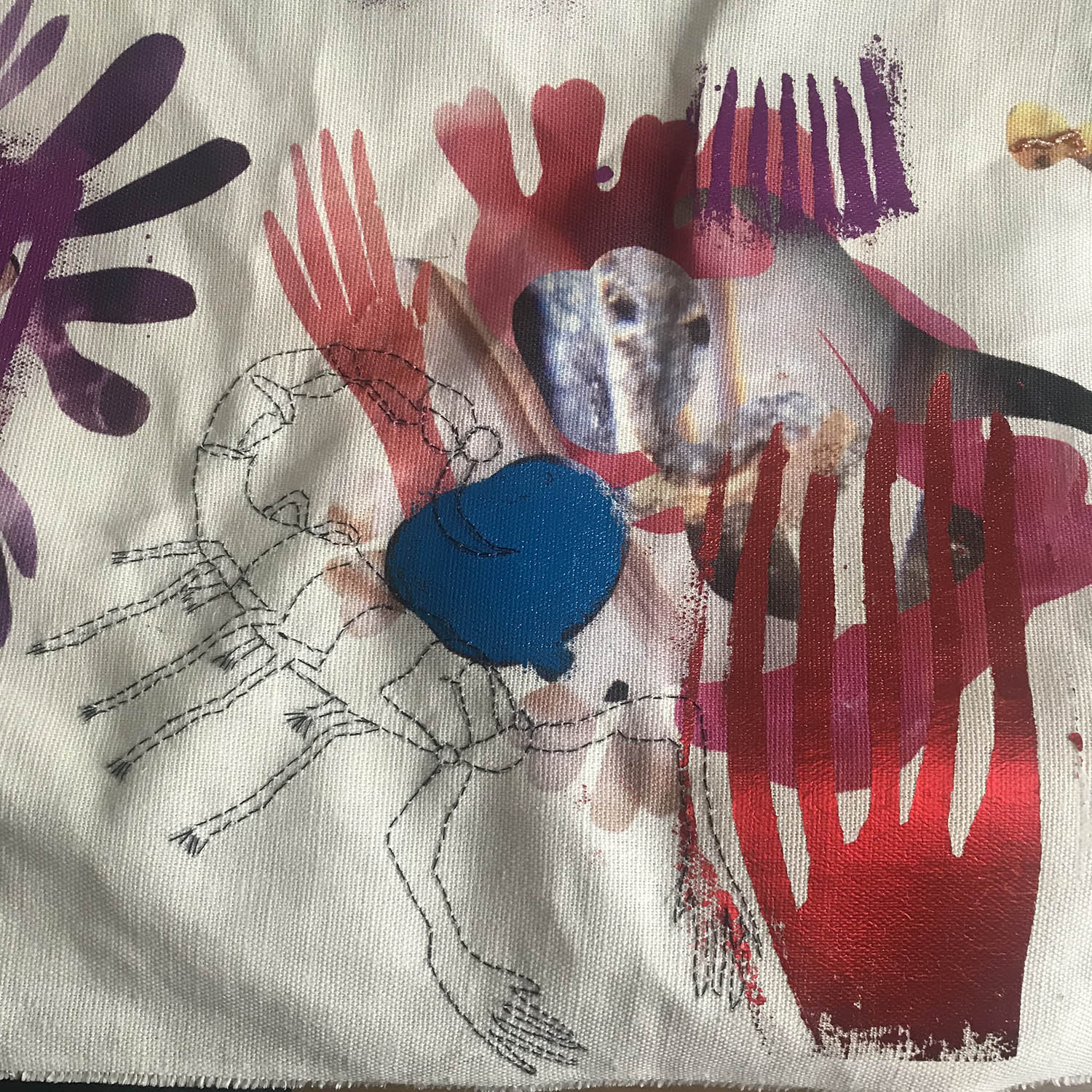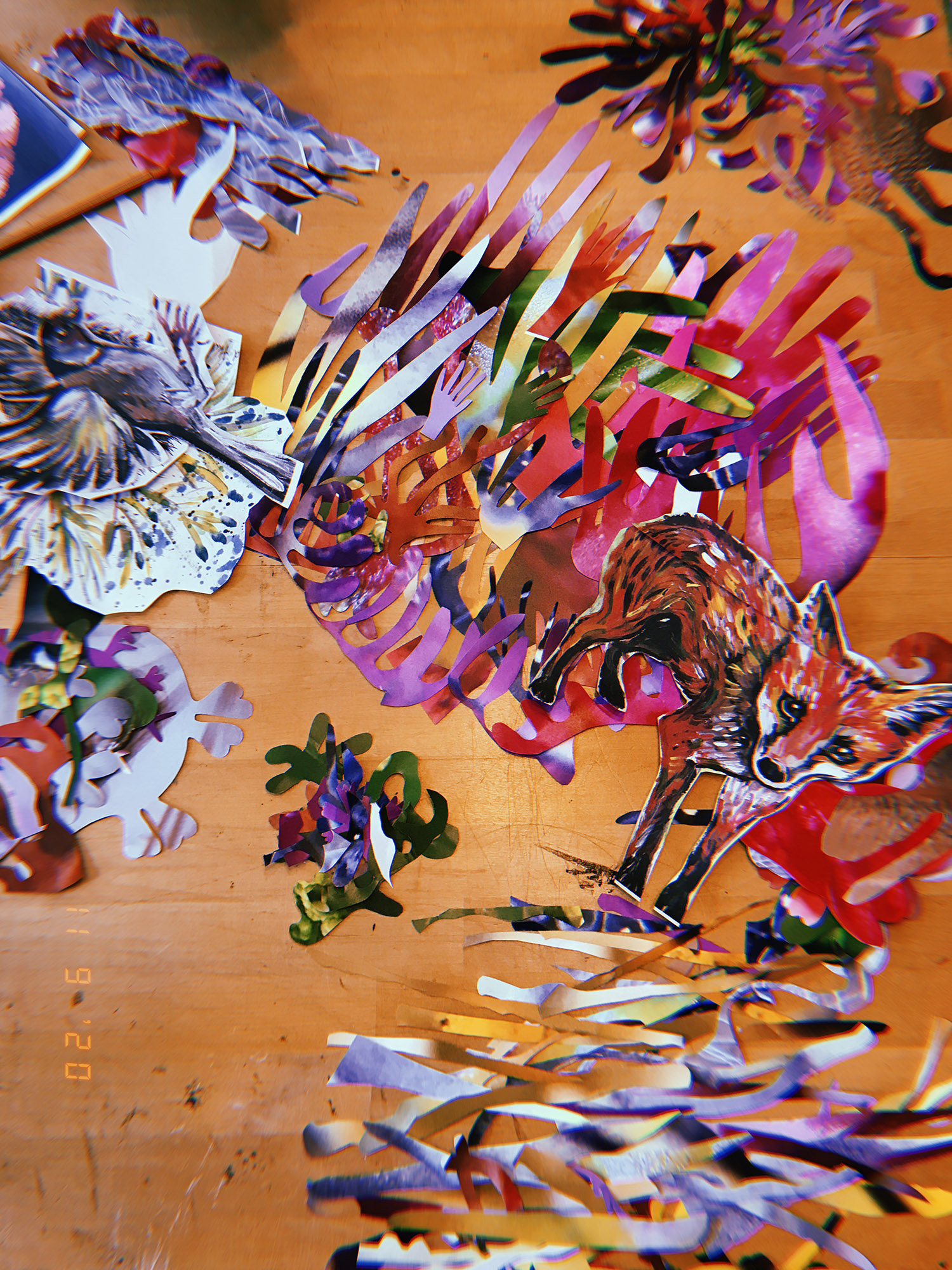
I received funding for a collaborative project with textile artist and designer Helen Greensmith in 2020 via the VACMA (Visual Arts and Crafts Makers Award) scheme. When the pandemic struck, we were forced to radically alter our way of working together. This shift had a great impact on the methods we used as well as the overall direction of the project.
We had applied for VACMA funding initially because we both wanted to undertake an experimental project which was not driven by the creation of works for commercial sale. As two independent, self employed, creatives we often find our creativity needs to be channelled towards making work to make ends meet, whereas this project was designed to be about play, experimentation and professional skill swapping.
We initially imagined creating pieces that hybridised our ways of working and drawing from our dual preoccupation with the natural world. Although the project was still heavily influenced by this, it was also impacted by the feeling of smallness we both experienced in being isolated at home due to Covid- and what the outside world soon came to represent to us, particularly a garden space, and how our perceptions of the world shifted and changed depending on our internal states. Helen has a garden and I do not, so when we were able to, we spent time together in this space, and it quickly became the basis for the project.
The garden was a space of work and play, but also embodied the complexities of our relationships with the exterior world. The microcosm of the garden came to hold a great significance for us, and reshaped the project in new, dynamic ways. We felt that the process then became intuitive, focusing on slow-working practices like embroidery and drawing/painting, which were therapeutic for both of us in a situation of confinement. We didn’t overly plan out the project, and instead worked in response to what each of us produced, the process felt very natural and unforced, leading us to eventually construct our own ‘little world’ in the form of a mock-up installation.




